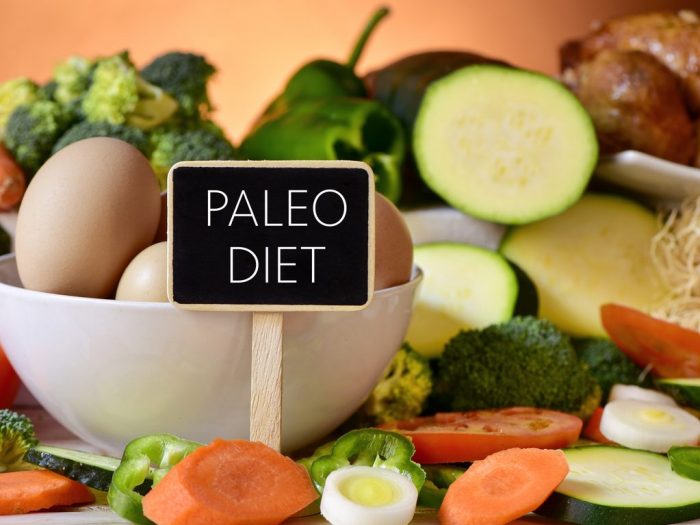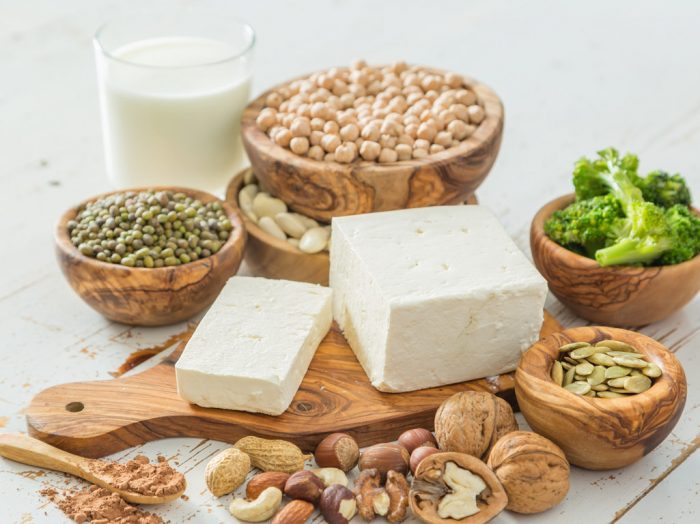The Paleo diet is based on the idea that, instead of counting calories, you should focus on eating the right foods. In this case, that means basing your menu on the foods that cavemen used to eat thousands of years ago.
To make a long story short, the Paleo diet means eating like our ancestors did. In the Paleolithic era, cave people ate natural food: vegetables including tubers and roots, fruit, seeds including nuts and wild grass seeds, insects, meat, fish, and shellfish. The Paleo diet excludes – as you can imagine – foods such as sugar, processed oils, salt, alcohol or coffee, and also legumes, grains, and dairy products. But why?
According to Wikipedia, there is evidence suggesting that Paleolithic societies gathered wild cereals for food use at least as early as 30,000 years ago but pulses, legumes, and grains were eaten rarely and never in large quantities on a daily basis.
Paleolithic living as a dietary concept was first promoted in 1975 by the gastroenterologist Dr. Walter Voegtlin and then popularized by Loren Cordain in his bestselling books.
The way the Paleo diet is interpreted these days varies. Some Paleo fans follow a more severe diet, while others take into account the fact that our digestive tracts have adapted to modern times, so they break some of the rules a little.
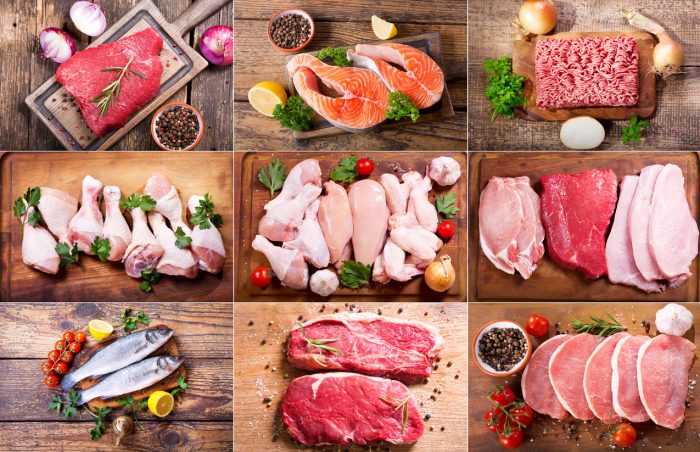
The basics of the Paleo diet
What to eat:
Meats
The relative proportions of plant and animal foods in the diets of Paleolithic people often varied between regions, with more meat being necessary in colder regions. If you chose to follow the Paleo diet, you are allowed to eat grass-fed meats, like:
- Poultry;
- Turkey;
- Pork;
- Veal;
- Bacon;
- Beef;
- Lamb;
- Buffalo;
- Bison;
- Rabbit;
- Goat;
- Goose;
- Duck;
- Quail.
People think that Paleolithic humans also consumed animal organ meats, including livers, kidneys, and brains.
Fish and Seafood:
- Salmon;
- Trout;
- Bass;
- Halibut;
- Mackerel;
- Tuna;
- Sardines;
- Haddock;
- Shrimp;
- Lobster;
- Clams;
- Other fish and seafood.
Choose wild-caught fish if you can.
Eggs:
You can enjoy all types of eggs while on the Paleo diet, as it represents a source of food that Stone Age people used to eat. Chose free-range, pastured or omega-3 enriched eggs. They might cost a bit more but it’s definitely a more Paleo way to go.
Vegetables:
If the day’s hunt didn’t go as planned, the Paleolithic man ate wild-growing veggies. We think that the Paleolithic diet included as much as 3.6–4.2 lb (1.65–1.9 kg) per day of fruit and vegetables.
Almost all vegetables are paleo with just a few exceptions. Vegetables with a high starch content, such as potatoes, are not allowed or, at least you should eat them in very small quantities.
So, you can eat asparagus, broccoli, Brussels sprouts, cabbage, cauliflower, celery, cucumber, eggplant, kale, mushrooms, parsnip, peppers (all kinds), pumpkin, radish, onions, green onions, carrots, tomatoes, spinach, and zucchini.
There are also starchy vegetables you can eat, but in moderation: butternut squash, sweet potatoes, yams, turnips, and beets.
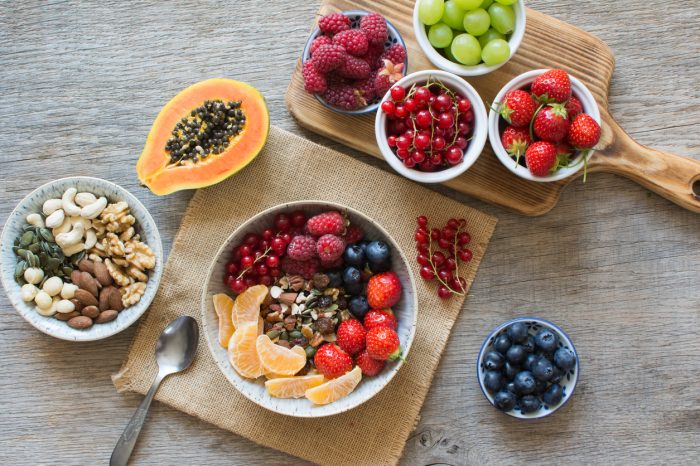
Fruit:
It is thought that until the Upper Paleolithic, humans were frugivores (meaning fruit eaters) who supplemented their meals with eggs and small prey such as baby birds and mussels. Some scientists think that they consumed big animals, such as antelopes, only on rare occasions.
You can eat fruit while you’re following the Paleo diet, but if you’re looking to lose weight, you’ll want to cut back on your fruit intake and focus more on the vegetables allowed on the Paleo diet, because fructose still means sugar.
That being said, you can eat apples, avocado, blackberries, papaya, peaches, plums, mango, lychee, blueberries, grapes, lemons, strawberries, watermelon, limes, raspberries, cantaloupe, tangerine, figs, oranges, bananas. Keep in mind that our ancestors did not have access to all these fruits all the time, so don’t overdo it.
Nuts and Seeds:
As a funny fact, in the Paleolithic era, music may have developed from cracking open nuts with stones. People have been eating nuts and seeds for thousands of years around the world.
Eat in moderation (because they have a high level of fat):
- Almonds;
- Macadamia nuts;
- Walnuts;
- Hazelnuts;
- Cashews;
- Pecans;
- Pine nuts;
- Sesame seeds;
- Pumpkin seeds;
- Sunflower seeds;
- Chia seeds.
Contrary to what most people think, peanuts are legumes and legumes are not paleo. But
Healthy Fats and Oils:
- Extra virgin olive oil;
- Coconut oil;
- Avocado oil;
- Flaxseed oil;
- Macadamia oil;
- Sesame oil;
Salt and Spices:
Spices and fresh herbs bring life to your dishes, so use them often.
- Sea salt;
- Himalayan salt;
- Garlic;
- Cinnamon;
- Turmeric;
- Ginger;
- Rosemary;
- Other herbs (preferably fresh).
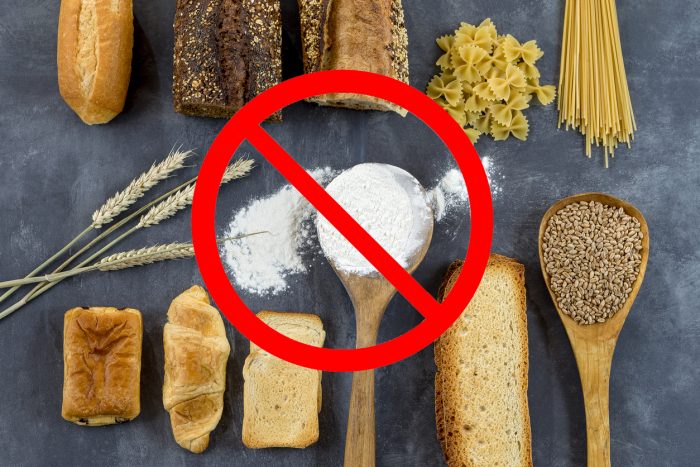
What NOT to Eat
Grains:
Grains (and also beans) were rarely eaten in the Paleolithic era, and never in large quantities on a daily basis. Forget about bread, corn flakes, or pasta, but also don’t touch any other farmed carbohydrate because these weren’t eaten in big quantities until people developed modern agriculture, about 10,000 years ago.
Don’t eat:
- Amaranth;
- Barley;
- Brown rice;
- Wild rice;
- Buckwheat;
- Bulgur (cracked wheat);
- Millet;
- Popcorn;
- Whole wheat cereal flakes;
- Muesli;
- Quinoa;
- Rye
- Sorghum
- Couscous
- Pasta, crackers, tortilla.
Beans and Legumes:
You might be wondering what a legume is. A legume is a simple dry fruit contained within a shed or a pod. The most well-known legumes are peas, beans, chickpeas, peanuts, lentils. But there are and many more:
- Alfalfa;
- Asparagus bean;
- Asparagus pea;
- Baby lima bean;
- Black bean;
- Black-eyed pea;
- Black turtle bean;
- Boston bean;
- Boston navy bean;
- Broad bean;
- Cannellini bean;
- Chickpeas;
- Chili bean;
- Cranberry bean;
- Dwarf bean;
- Egyptian bean;
- Egyptian white broad bean;
- English bean;
- Fava bean;
- Fava coceira;
- Field pea;
- French green bean;
- Frijol bola roja;
- Frijole negro;
- Great northern bean;
- Green bean;
- Green and yellow peas;
- Kidney bean;
- Lentils;
- Lespedeza;
- Licorice;
- Lima bean;
- Madagascar bean;
- Mexican black bean;
- Mexican red bean;
- Molasses face bean;
- Mung bean;
- Mung pea;
- Mungo bean;
- Navy bean;
- Pea bean;
- Peanut;
- Peruvian bean;
- Pinto bean;
- Red bean;
- Red clover;
- Red eye bean;
- Red kidney bean;
- Rice bean;
- Runner bean;
- Scarlet runner bean;
- Small red bean;
- Snow pea;
- Southern pea;
- Sugar snap pea;
- Soybean;
- Wax bean;
- White vlover;
- White kidney bean;
- White pea bean.
Dairy:
Strict Paleo followers say dairy is not allowed. The only one permitted is organic butter. So, avoid most dairy, especially low-fat versions, because they are overly processed.
Vegetable Oils:
Besides being too fatty, these oils are also very highly processed, so try to not use them.
- Canola (rapeseed) oil;
- Corn oil;
- Grapeseed oil;
- Soybean oil;
- Rice bran oil;
- Sunflower oil;
- Safflower oil;
- Soybean oil;
- Peanut oil;
- Cottonseed oil.
Trans Fats:
First of all, don’t eat margarine! Second, don’t eat various processed foods on which you see written words like ‘hydrogenated’ or ‘partially hydrogenated’ oils.
Sweet Processed Foods:
Following the Paleo diet means avoiding sugar and high fructose corn syrup, all the soft drinks, fruit juices, table sugar, candies, pastries, ice cream, and many others.
Artificial Sweeteners:
As you can imagine, our ancestors didn’t eat:
- Aspartame;
- Sucralose;
- Cyclamates;
- Saccharin;
- Acesulfame Potassium;
- Other artificial sweeteners.
Use natural sweeteners instead. Choose honey, maple syrup, agave syrup, dates, coconut sugar, or banana puree, when your recipe allows it.
Highly Processed Foods:
Everything from the store labeled ‘diet’ or ‘low-fat’ or has many weird ingredients that you shouldn’t consume. This includes artificial meal replacements, which usually are made of soy, which is considered a legume, and legumes are not a part of the paleo diet.
Tricky foods
Potatoes
Strict Paleo people say you don’t have to eat potatoes. Still, some Paleo fans say it’s ok to eat potatoes in moderation.
While the white potato is a natural food that could and probably have existed in the cavemen era, its nutritional offering isn’t all that great.
Mayonnaise
Is mayonnaise allowed on this diet? The long answer is complicated. The short answer is that, yes, mayonnaise can be Paleo, if it’s made with allowed oils. If you want to use it to give some extra taste to your meal, then you should make your own mayonnaise, using Paleo oils (olive oil or avocado oil). Also, don’t eat too much mayo, because it’s very high in calories.
Cocoa
Cocoa is the processed form of cacao beans. That is the reason people who opt for strict Paleo don’t use it in their dishes while following this diet.
Raw cacao powder and cacao nibs are considered Paleo because they contain only one ingredient: raw, pulverized cacao beans, which are not actually beans, but the seeds of the fruit from the cacao tree.
Also, people who are not so strict with their diet eat 70 percent dark chocolate or higher.
Peanuts:
As we were saying, peanuts are not paleo because they’re not nuts, but legumes. And, of course, peanut butter isn’t Paleo!
Alcohol
Wine is often considered to be the closest type of alcohol considered paleo-friendly – red wine in particular. But you should find organic options.
Beer and spirits are made of grains, so they’re a no-no. Red wine is often considered to be a healthy alcoholic option in the Paleo community, but only if you consume it in moderation.
Lately, cider has been increasing in popularity over the last few in the Paleo community. Just check it out for added sugars, gluten, and preservatives.
Here you can find out more about the Paleo principles:

